As one of Britain’s eminent universities, University College London (UCL) doesn’t just provide top class education to its students; there are a number of museums and collections dedicated to bringing arts and specialized sciences to a wider audience across campus too.
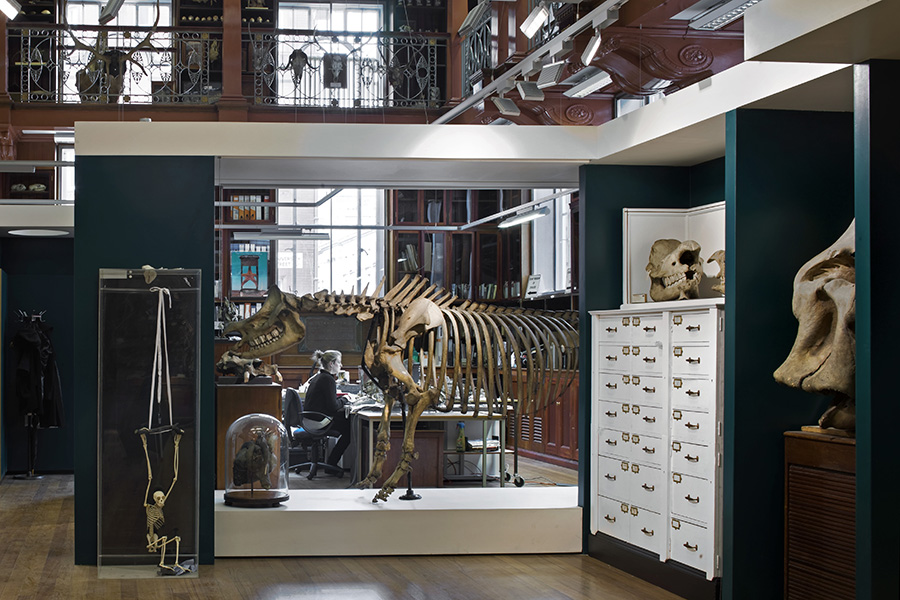
The Grant Museum (Photo: Matt Clayton courtesy of UCL)
The idea behind UCL’s museums, theatres and collections is to bring people together in a space that allows them to engage directly with the objects of certain academic disciplines. They not only facilitate learning, but also connection. This is an irreplaceable resource for anybody lucky enough to be studying at the university, but there are plenty of exhibitions and collections that are open to the public as well.
The range of educative experiences provided by UCL is surprisingly eclectic. Currently it is possible for visitors to explore, among other things, zoology, archaeology and art. In 2018 this will expand to theatre as well. Meanwhile there are additional collections accessible to researchers by appointment only. Here’s a look at what’s open to the public.
Grant Museum of Zoology – Open: Mon-Sat 1-5pm
Formed in 1828, the Grant Museum of Zoology has been around nearly as long as UCL has. That is because the first chair of zoology at the university amassed the initial items of the collection for the purposes of teaching. Creeping up to two centuries later, that initial impulse to teach continues to impart wisdom, unlocking the mysteries of the animal kingdom through the skeletons and slides on show. There is an utterly remarkable micrarium dedicated to showcasing life’s smaller specimens, in a beautifully lit display unlike anything anywhere in the world. On a more nostalgic note, it is possible to see skeletons of extinct creatures like the Dodo and Tasmanian Tiger.
Rockefeller Building, WC1E 6DE
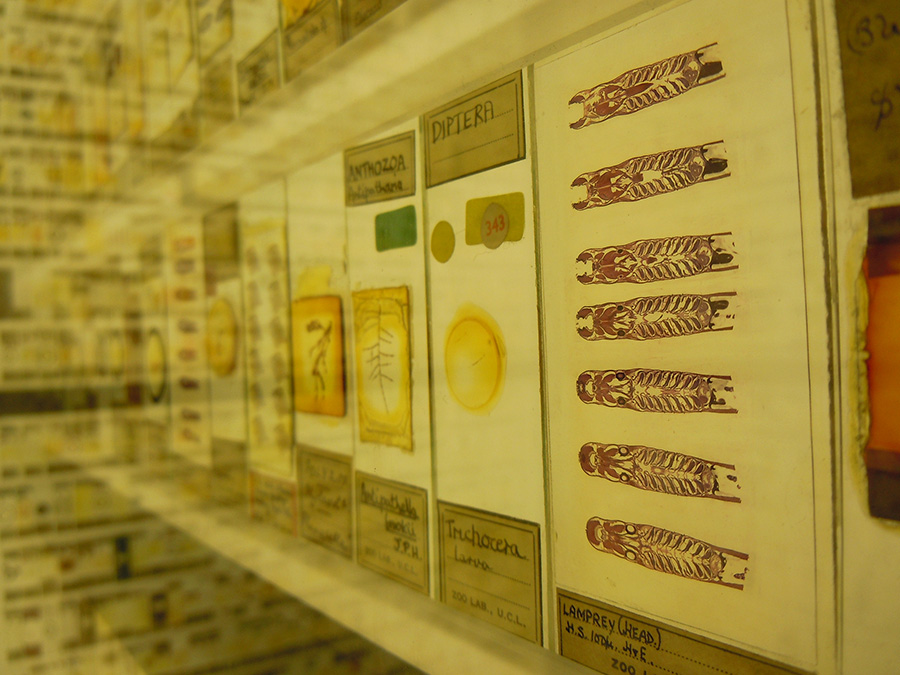
The Grant Museum of Zoology’s Micrarium (Photo: Kevan via Flickr)
The Octagon – Open: Daily 9am-7pm
For those curious to see the creative endeavours of UCL’s current students and researchers, the Octagon Galley on the ground floor of the Wilkins Building, is the space to find some great examples. The exhibition at the Octagon changes regularly to reflect the ongoing nature of the research at UCL. Occasionally these exhibitions showcase specimens from other UCL museums, like the Grant Museum of Zoology. That can mean anything from Ancient Egyptian artefacts to abstract drawings or whale skulls could be on show. And if you’re lucky, all three at the same time.
Wilkins Building, WC1E 6BT
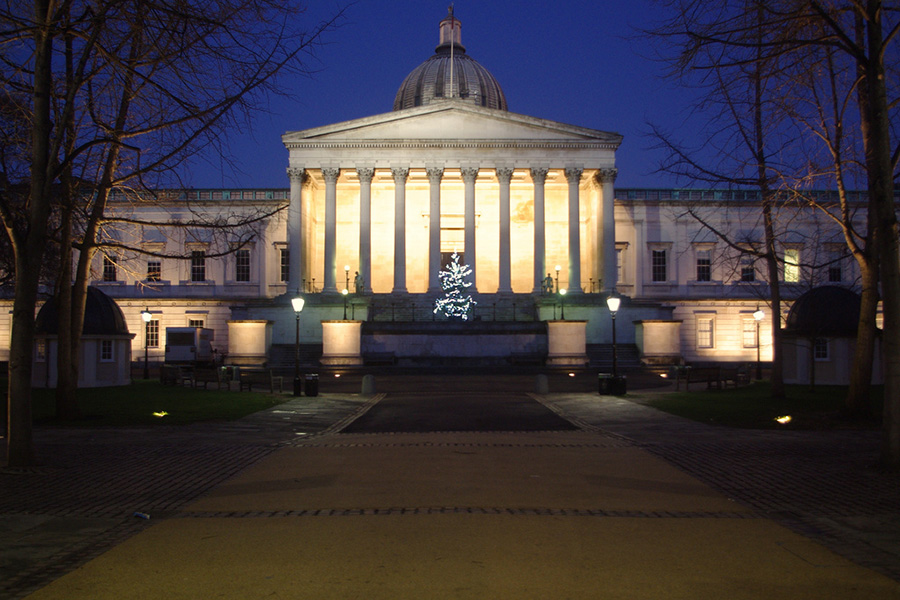
UCL’s Wilkins Building (Photo: Alejandro Giacometti via Flickr)
UCL Art Museum – Open: Mon-Fri 1-5pm
Spread out around the college, the UCL art museum consists of disparate collections and unique exhibitions. One of the permanent fixtures is The Flaxman Gallery, showcasing John Flaxman’s neo-classical plaster models underneath the college’s celebrated dome, which is the pinnacle of the Wilkins Building. The Print Room of the museum houses many of the important drawings of the collection, by artists like Turner and Constable, as well as some Rembrandt etchings. These early proofs are especially valuable as a teaching tool. On that note, there is also plenty of excellent work on show from students, past and present, of UCL’s very own Slade School of Fine Art.
South Cloisters, Wilkins Building, WC1E 6BT
Petrie Museum – Open: Tue-Sat 1-5pm
When most people think of remarkable collections of ancient artefacts, especially related to Egypt, they think of the British Museum. However the 80,000+ objects at the Petrie Museum allow UCL to stake a claim of having one of the most extensive archaeological collections in the world, when it comes to Egypt. The collection also spans Sudanese archaeology, with findings from prehistoric through to Islamic Period excavation sites across the region. The museum is named after William Flinders Petrie who was a prolific Nile delta archaeologist. Petrie sold his personal collection to UCL in 1913. Other pieces have been donated and added before and since his time, up until the export of antiquities from Egypt and Sudan was outlawed.
Malet Place, WC1E 6BT
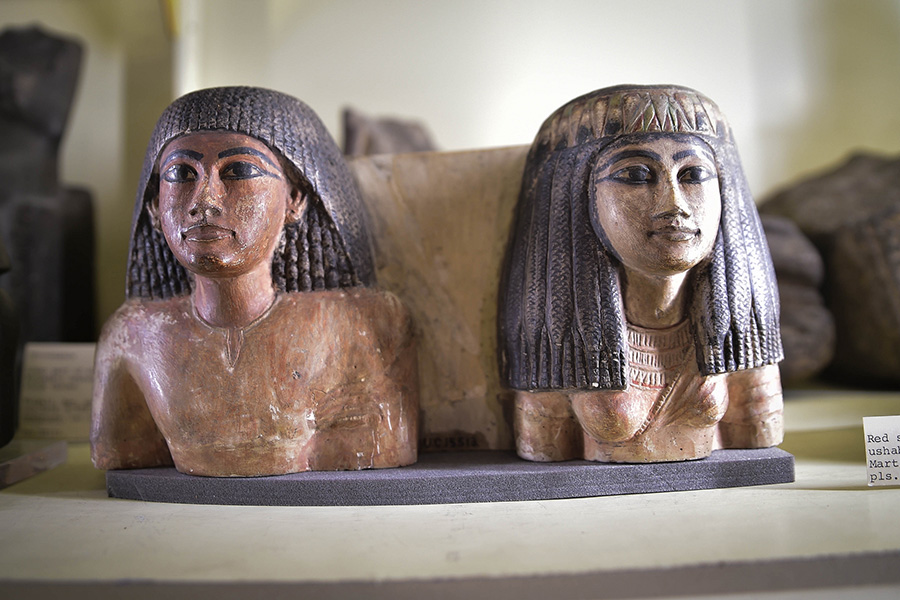
Egyptian artefacts at the Petrie Museum (Photo: Pete Sheffield via Flickr)
Pathology Collection – Open: Mon & Tue 10am-4pm
The main function of the UCL Pathology Collection is to serve as an invaluable teaching and research tool. As such, public access to this museum at the Royal Free is limited. The 6,000 specimen collection includes wax models, skeletal material and what are known as fluid-preserved human pathology specimens. That means cross sections of human body parts, like organs and tissue, which allow for the effective study of disease. It’s safe to say this collection isn’t for the squeamish, but provides a fascinating, active glimpse into pathological studies.
Royal Free Hospital Campus, NW3 2QG
Jeremy Bentham Collection – Open: Mon-Fri 8am-6pm
Jeremy Bentham was one of Britain’s – perhaps the world’s – most significant social reformers, given the era in which he worked. He is credited with founding the philosophical concept of modern utilitarianism, i.e. the pursuit of actions that do the most good for most people. It’s a concept that still governs political debate today, especially in the struggle for equality. Even in the late 1700s Bentham was a proponent of sexual equality and animal rights. It was upon much of his philosophical and social work that UCL was founded; Bentham was even one of just a thousand shareholders of the university when it first opened. He is therefore considered the university’s spiritual founder. UCL was the first British university to allow people of all races and political beliefs to enrol. The Jeremy Bentham Collection at UCL is small and mainly contains manuscripts. However the main draw is somewhat unusual: The Auto-icon. This consists of Bentham’s real skeleton dressed in a suit with a wax head on top.
South Cloisters, Wilkins Building, WC1E 6BT
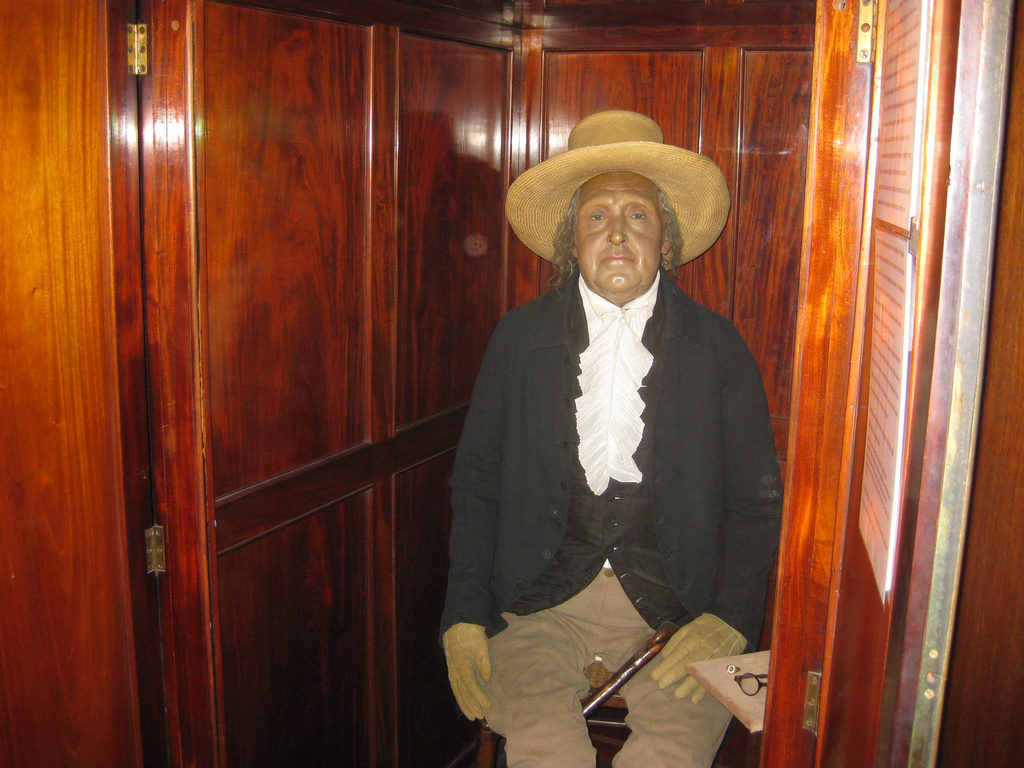
Jeremy Bentham auto icon (Photo: Matt Brown via Flickr)
Bloomsbury Theatre and Studio (theatre reopens at the end of 2018)
While the Bloomsbury Studio, a 70 seat venue, is already open and used for hire at UCL, the Bloomsbury Theatre is still undergoing refurbishment. But the latter stage has been a significant one in the past, graced by the likes of Eddie Izzard, Jo Brand, Jimmy Carr and Ricky Gervais (who also studied and worked at UCL). There also used to be a robust programme of student productions at the theatre along with some smaller operas. While there was no official reopening date for the theatre at the time of writing, it should be an exciting addition to UCL’s list of facilities along with the museums, as long as it maintains and builds upon the sterling work done prior to its closure in 2015.
15 Gordon Street, WC1H 0AH